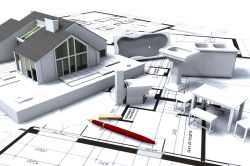Breaking News
- Flexible Remote Work Opportunity for University Students: Earn $100–$250 Per Month ...Read More
- Ministry of Education and Sports Azerbaijan Government Scholarships For 2025-2026 Academic Year ...Read More
- Government Sponsorship Undergraduate Admission Lists 2025-26 for Makerere University ...Read More
- Ministry of Education And Sports: Egyptian Government Scholarships 2025-2026 Academic Year ...Read More
- Ground Breaker Full Scholarship for girls to study Software Engineering 2025 July Intake ...Read More
- Tony Elumelu Foundation Entrepreneurship Programme (TEEP) 2025 for young African Entrepreneurs ...Read More
- DESIGNING FUTURES 2050 International Design Competition 2025 (€15,000 prize) ...Read More
- Ground Breaker Full time Scholarship for girls to study Software Engineering 2025 Intake ...Read More
- Ministry of Education And Sports Algerian Vocational Training Scholarships for 2024-2025 AY ...Read More
- Ministry of Education and Sports Advert for the Algerian Government Scholarships for 2024-2025 ...Read More
Carpenter
Construct, erect, install, and repair structures and fixtures of wood, plywood, and wallboard, using carpenter's hand tools and power tools.
Add to FavouritesTasks
1. Follow established safety rules and regulations and maintain a safe and clean environment.
2. Study specifications in blueprints, sketches, or building plans to prepare project layout and determine dimensions and materials required.
3. Measure and mark cutting lines on materials, using a ruler, pencil, chalk, and marking gauge.
4. Shape or cut materials to specified measurements, using hand tools, machines, or power saws.
5. Install structures or fixtures, such as windows, frames, floorings, trim, or hardware, using carpenters' hand or power tools.
6. Verify trueness of structure, using plumb bob and level.
7. Select and order lumber or other required materials.
8. Arrange for subcontractors to deal with special areas, such as heating or electrical wiring work.
9. Maintain records, document actions, and present written progress reports.
10. Build or repair cabinets, doors, frameworks, floors, or other wooden fixtures used in buildings, using woodworking machines, carpenter's hand tools, or power tools.
11. Erect scaffolding or ladders for assembling structures above ground level.
12. Assemble and fasten materials to make frameworks or props, using hand tools and wood screws, nails, dowel pins, or glue.
13. Remove damaged or defective parts or sections of structures and repair or replace, using hand tools.
14. Finish surfaces of woodwork or wallboard in houses or buildings, using paint, hand tools, or paneling.
15. Apply shock-absorbing, sound-deadening, or decorative paneling to ceilings or walls.
16. Perform minor plumbing, welding, or concrete mixing work.
17. Prepare cost estimates for clients or employers.
Key knowledge areas
1. Building and Construction — Knowledge of materials, methods, and the tools involved in the construction or repair of houses, buildings, or other structures such as highways and roads.
2. Mathematics — Knowledge of arithmetic, algebra, geometry, calculus, statistics, and their applications.
3. English Language — Knowledge of the structure and content of the English language including the meaning and spelling of words, rules of composition, and grammar.
4. Mechanical — Knowledge of machines and tools, including their designs, uses, repair, and maintenance.
5. Design — Knowledge of design techniques, tools, and principles involved in production of precision technical plans, blueprints, drawings, and models.
6. Public Safety and Security — Knowledge of relevant equipment, policies, procedures, and strategies to promote effective local, state, or national security operations for the protection of people, data, property, and institutions.
7. Administration and Management — Knowledge of business and management principles involved in strategic planning, resource allocation, human resources modeling, leadership technique, production methods, and coordination of people and resources.
8. Education and Training — Knowledge of principles and methods for curriculum and training design, teaching and instruction for individuals and groups, and the measurement of training effects.
9. Customer and Personal Service — Knowledge of principles and processes for providing customer and personal services. This includes customer needs assessment, meeting quality standards for services, and evaluation of customer satisfaction.
Skills
1. Active Listening — Giving full attention to what other people are saying, taking time to understand the points being made, asking questions as appropriate, and not interrupting at inappropriate times.
2. Monitoring — Monitoring/Assessing performance of yourself, other individuals, or organizations to make improvements or take corrective action.
3. Speaking — Talking to others to convey information effectively.
4. Active Learning — Understanding the implications of new information for both current and future problem-solving and decision-making.
5. Complex Problem Solving — Identifying complex problems and reviewing related information to develop and evaluate options and implement solutions.
6. Coordination — Adjusting actions in relation to others' actions.
7. Critical Thinking — Using logic and reasoning to identify the strengths and weaknesses of alternative solutions, conclusions or approaches to problems.
8. Judgment and Decision Making — Considering the relative costs and benefits of potential actions to choose the most appropriate one.
9. Reading Comprehension — Understanding written sentences and paragraphs in work related documents.
10. Time Management — Managing one's own time and the time of others.






































































































































